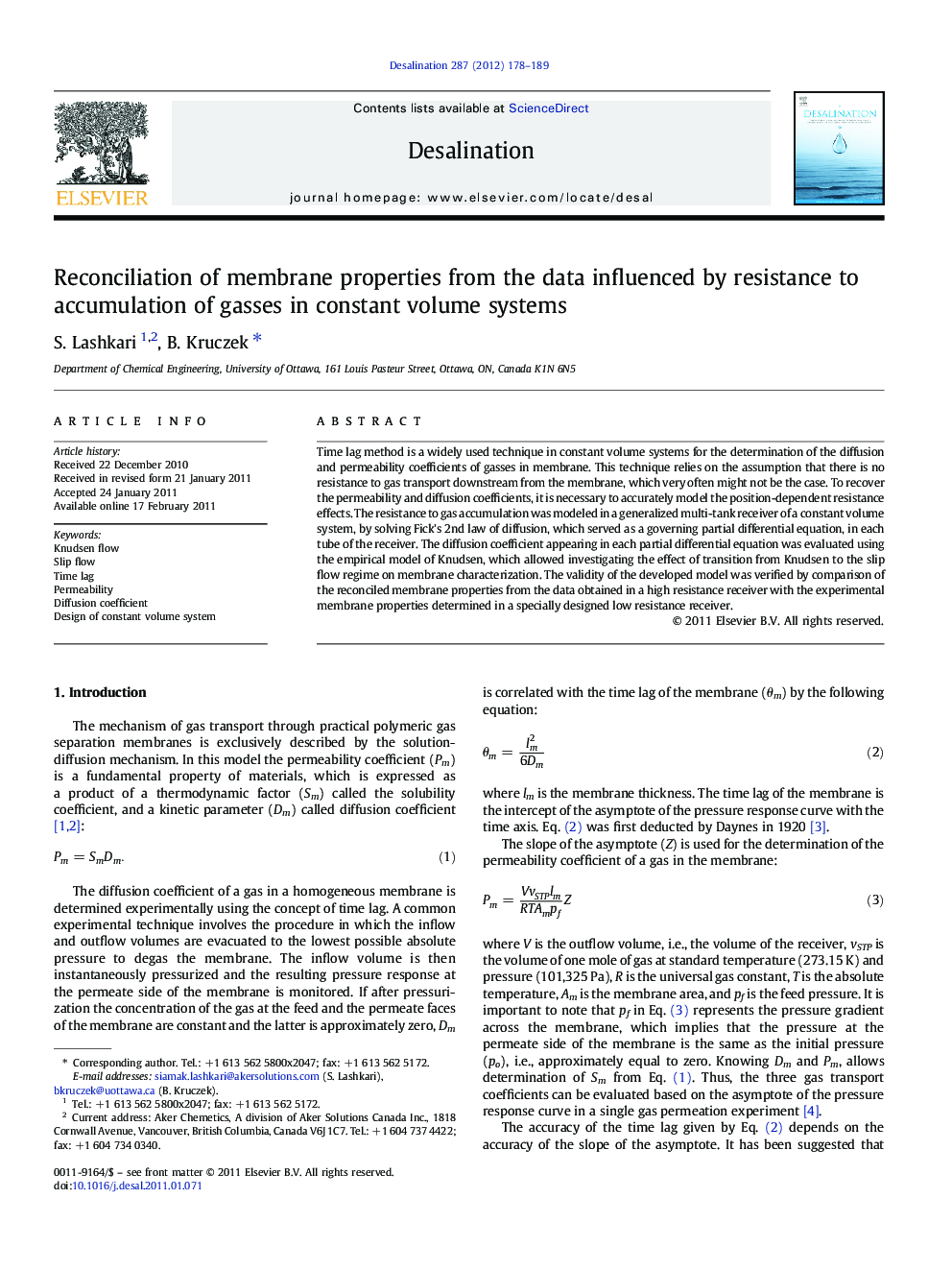| Article ID | Journal | Published Year | Pages | File Type |
|---|---|---|---|---|
| 624461 | Desalination | 2012 | 12 Pages |
Time lag method is a widely used technique in constant volume systems for the determination of the diffusion and permeability coefficients of gasses in membrane. This technique relies on the assumption that there is no resistance to gas transport downstream from the membrane, which very often might not be the case. To recover the permeability and diffusion coefficients, it is necessary to accurately model the position-dependent resistance effects. The resistance to gas accumulation was modeled in a generalized multi-tank receiver of a constant volume system, by solving Fick's 2nd law of diffusion, which served as a governing partial differential equation, in each tube of the receiver. The diffusion coefficient appearing in each partial differential equation was evaluated using the empirical model of Knudsen, which allowed investigating the effect of transition from Knudsen to the slip flow regime on membrane characterization. The validity of the developed model was verified by comparison of the reconciled membrane properties from the data obtained in a high resistance receiver with the experimental membrane properties determined in a specially designed low resistance receiver.
Research highlights► Determination of diffusivity and permeability of membrane using time lag method. ► Error in membrane properties due to resistance to gas accumulation. ► Importance of the configuration of the constant volume receiver. ► Demonstration of the recovery of the actual membrane properties.
